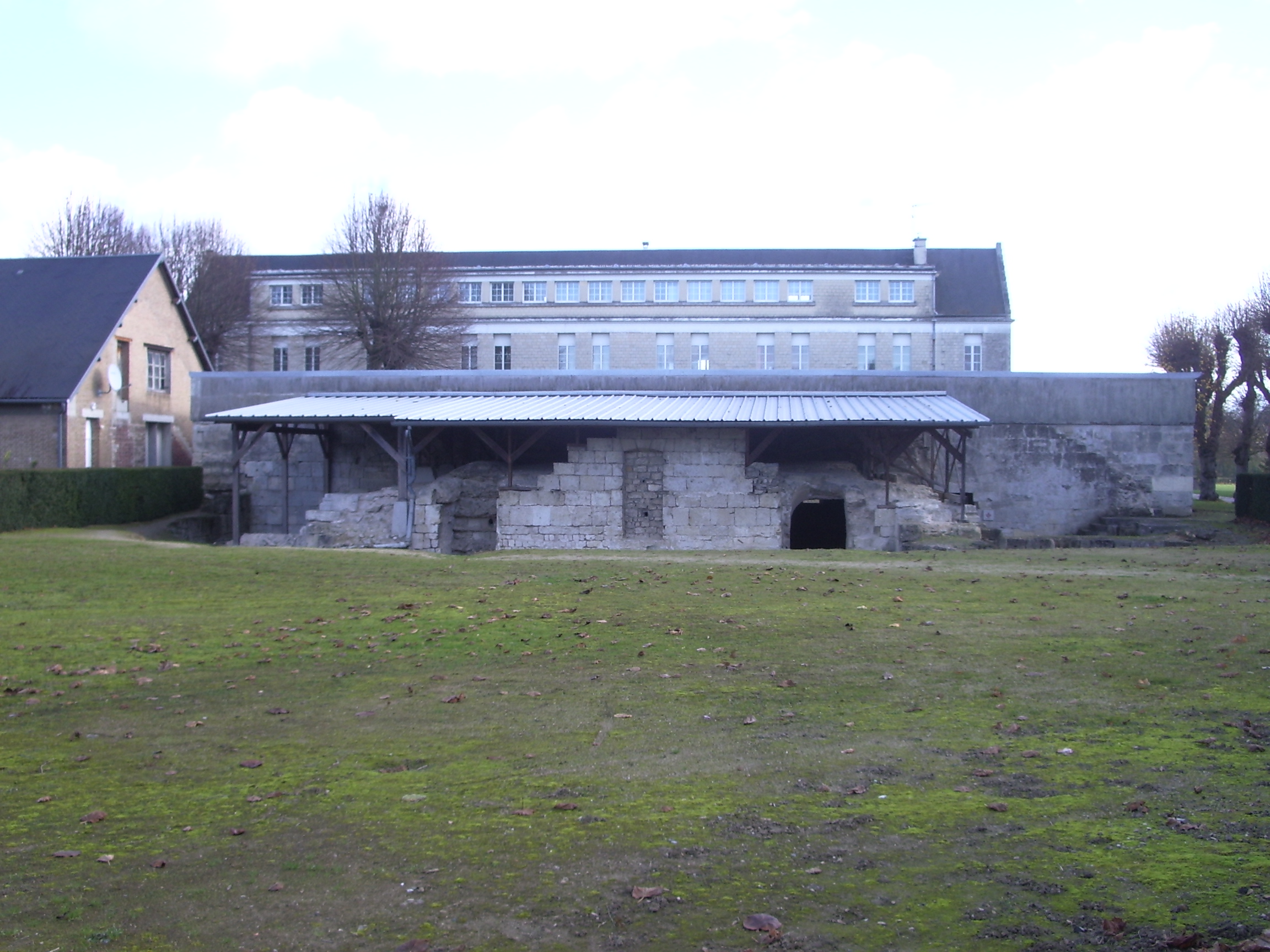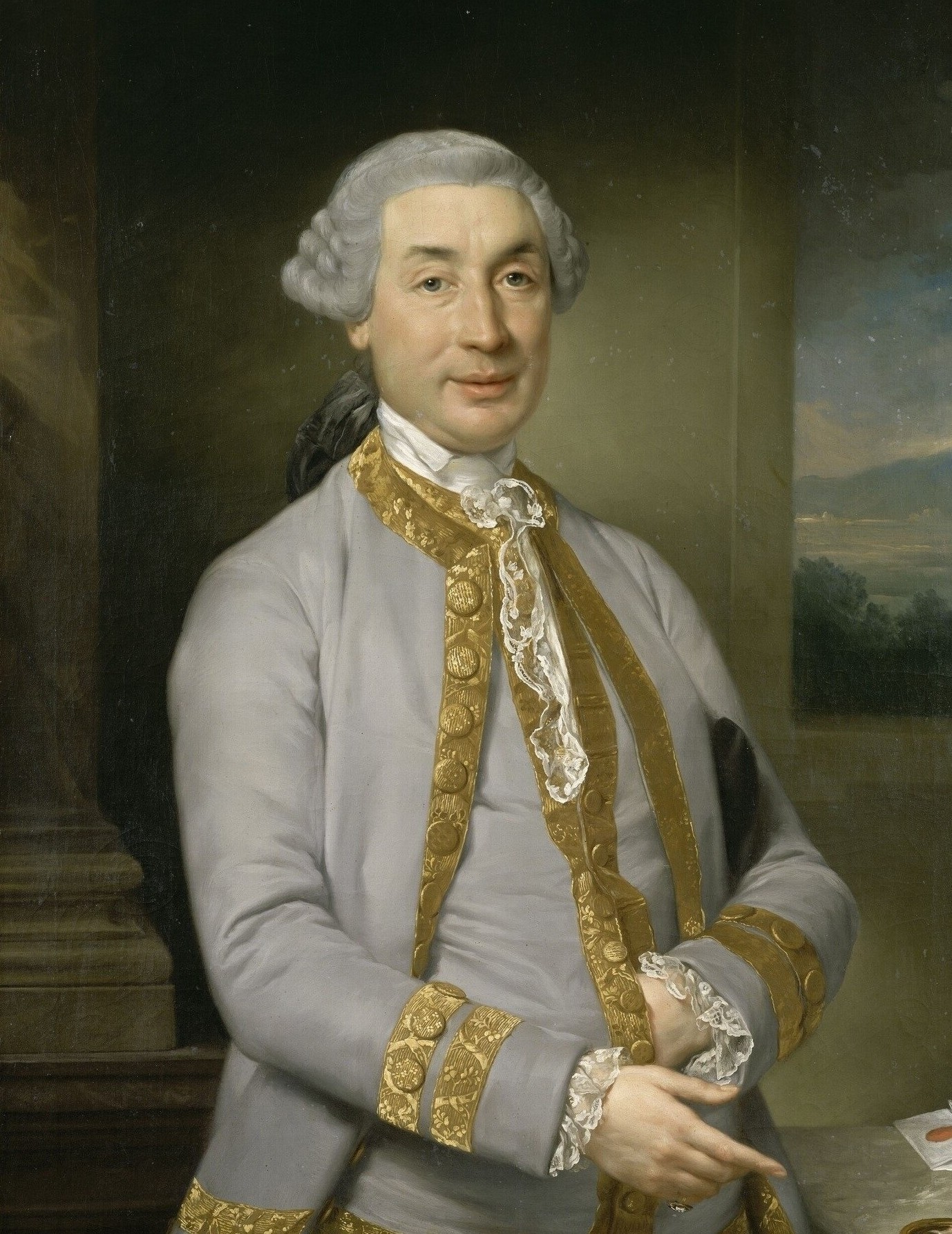|
Oaths Of Strasbourg
The Oaths of Strasbourg were a military pact made on 14 February 842 by Charles the Bald and Louis the German against their older brother Lothair I, the designated heir of Louis the Pious, the successor of Charlemagne. One year later the Treaty of Verdun would be signed, with major consequences for Western Europe's geopolitical landscape. Louis the German swore his oath in Romance so that the soldiers of Charles the Bald could understand him. Likewise, the latter recited his in Germanic so that Louis' soldiers would understand. The Romance section of the Oaths is of special importance to historical linguistics, as it is the oldest extant document in France that was written deliberately and consistently in a form of Romance. Context Centuries after the fall of the Western Roman Empire, Charlemagne, who had conquered much of its former territory, announced its restoration. Upon his death, he passed this realm to his son Louis the Pious, who would in turn pass it to his f ... [...More Info...] [...Related Items...] OR: [Wikipedia] [Google] [Baidu] |
Charles The Bald
Charles the Bald (french: Charles le Chauve; 13 June 823 – 6 October 877), also known as Charles II, was a 9th-century king of West Francia (843–877), king of Italy (875–877) and emperor of the Carolingian Empire (875–877). After a series of civil wars during the reign of his father, Louis the Pious, Charles succeeded, by the Treaty of Verdun (843), in acquiring the western third of the empire. He was a grandson of Charlemagne and the youngest son of Louis the Pious by his second wife, Judith. Struggle against his brothers He was born on 13 June 823 in Frankfurt, when his elder brothers were already adults and had been assigned their own ''regna'', or subkingdoms, by their father. The attempts made by Louis the Pious to assign Charles a subkingdom, first Alemannia and then the country between the Meuse and the Pyrenees (in 832, after the rising of Pepin I of Aquitaine) were unsuccessful. The numerous reconciliations with the rebellious Lothair and Pepin, as w ... [...More Info...] [...Related Items...] OR: [Wikipedia] [Google] [Baidu] |
Abbey Of Saint-Médard De Soissons
The Abbey of Saint-Médard de Soissons was a Benedictine monastery, at one time held to be the greatest in France.Goyau, Georges. "Soissons." The Catholic Encyclopedia Vol. 14. New York: Robert Appleton Company, 1912. 25 September 2022 History The abbey was founded in 557 by on his manor of Crouy, near the villa of , just outside the then boundaries of to house the remains of |
Franco-Provençal Language
Franco-Provençal (also Francoprovençal, Patois or Arpitan) is a language within Gallo-Romance originally spoken in east-central France, western Switzerland and northwestern Italy. Franco-Provençal has several distinct dialects and is separate from but closely related to neighbouring Romance dialects (the langues d'oïl and the langues d'oc, in France, as well as Rhaeto-Romance in Switzerland and Italy). Even with all its distinct dialects counted together, the number of Franco-Provençal speakers has been declining significantly and steadily. According to UNESCO, Franco-Provençal was already in 1995 a "potentially endangered language" in Italy and an "endangered language" in Switzerland and France. Ethnologue classifies it as "nearly extinct". The designation ''Franco-Provençal'' (Franco-Provençal: ; french: francoprovençal; it, francoprovenzale) dates to the 19th century. In the late 20th century, it was proposed that the language be referred to under the neol ... [...More Info...] [...Related Items...] OR: [Wikipedia] [Google] [Baidu] |
Picard Language
Picard (, also , ) is a '' langue d'oïl'' of the Romance language family spoken in the northernmost part of France and Hainaut province in Belgium. Administratively, this area is divided between the French Hauts-de-France region and the Belgian Wallonia along the border between both countries due to its traditional core being the districts of Tournai and Mons ( Walloon Picardy). Picard is referred to by different names as residents of Picardy simply call it , but it is more commonly known as or in the more populated ( Romance Flanders around the metropolis of Lille and Douai, and northeast Artois around Béthune and Lens). It is also named around Valenciennes, around Roubaix, or simply in general. In 1998, Picard native speakers amounted to 700,000 individuals, the vast majority of which were elderly people (aged 65 and over). Since its daily use had drastically declined, Picard was declared by the United Nations Educational, Scientific, and Cultural Organ ... [...More Info...] [...Related Items...] OR: [Wikipedia] [Google] [Baidu] |
Koiné Language
In linguistics, a koiné language, koiné dialect, or simply koiné (Ancient Greek κοινή, "common anguage) is a standard or common language or dialect that has arisen as a result of the contact, mixing, and often simplification of two or more mutually intelligible varieties of the same language. As speakers already understood one another before the advent of the koiné, the process of koineization is not as drastic as pidginization and creolization. Unlike pidginization and creolization, there is no "target" in koineization, which thus involves continuity in that speakers do not need to abandon their own linguistic varieties. The normal influence between neighbouring dialects is not regarded as koineization. A koiné variety emerges as a new spoken variety in addition to the originating dialects. It does not change any existing dialect, which distinguishes koineization from the normal evolution of dialects. While similar to zonal auxiliary languages koiné languages ... [...More Info...] [...Related Items...] OR: [Wikipedia] [Google] [Baidu] |
Lorraine
Lorraine , also , , ; Lorrain: ''Louréne''; Lorraine Franconian: ''Lottringe''; german: Lothringen ; lb, Loutrengen; nl, Lotharingen is a cultural and historical region in Northeastern France, now located in the administrative region of Grand Est. Its name stems from the medieval kingdom of Lotharingia, which in turn was named after either Emperor Lothair I or King Lothair II. Lorraine later was ruled as the Duchy of Lorraine before the Kingdom of France annexed it in 1766. From 1982 until January 2016, Lorraine was an administrative region of France. In 2016, under a reorganisation, it became part of the new region Grand Est. As a region in modern France, Lorraine consisted of the four departments Meurthe-et-Moselle, Meuse, Moselle and Vosges (from a historical point of view the Haute-Marne department is located in the region), containing 2,337 communes. Metz is the regional prefecture. The largest metropolitan area of Lorraine is Nancy, which had developed for centur ... [...More Info...] [...Related Items...] OR: [Wikipedia] [Google] [Baidu] |
Langues D'oïl
The ''langues d'oïl'' (; ) are a dialect continuum that includes standard French and its closest autochthonous relatives historically spoken in the northern half of France, southern Belgium, and the Channel Islands. These belong to the larger category of Gallo-Romance languages, which also include the historical languages of east-central France and western Switzerland, southern France, portions of northern Italy, and the Val d'Aran in Spain. Linguists divide the Romance languages of France, and especially of Medieval France, into two main geographical subgroups: the ''langues d'oïl'' to the North, and the '' langues d'oc'' in the Southern half of France. Both groups are named after the word for "yes" in them or their recent ancestral languages. The most common modern ''langue d'oïl'' is standard French, in which the ancestral "oïl" has become "oui". Terminology ''Langue d'oïl'' (in the singular), ''Oïl dialects'' and ''Oïl languages'' (in the plural) designate the a ... [...More Info...] [...Related Items...] OR: [Wikipedia] [Google] [Baidu] |
Ripuarian Language
Ripuarian ( ; also ''Ripuarian Franconian''; german: Ripuarisch, , ''ripuarische Mundart, ripuarischer Dialekt, ripuarisch-fränkische Mundart, Ribuarisch'', nl, Ripuarisch , ''Noordmiddelfrankisch'') is a German dialect group, part of the West Central German language group. Together with the Moselle Franconian which includes the Luxembourgish language, Ripuarian belongs to the larger Central Franconian dialect family and also to the Rhinelandic linguistic dialect continuum, continuum with the Low Franconian languages. It is spoken in the Rhineland south of the Benrath line — from northwest of Düsseldorf and Cologne to Aachen in the west and to Waldbröl in the east. The language area also comprises the north of the German-speaking Community of Belgium as well as the southern edge of the Limburg (Netherlands), Limburg province of the Netherlands, especially Kerkrade (''Kirchroa''), where it is perceived as a variety of Limburgish language, Limburgish and legally treated as ... [...More Info...] [...Related Items...] OR: [Wikipedia] [Google] [Baidu] |
Library Classification
A library classification is a system of organization of knowledge by which library resources are arranged and ordered systematically. Library classifications are a notational system that represents the order of topics in the classification and allows items to be stored in that order. Library classification systems group related materials together, typically arranged as a hierarchical tree structure. A different kind of classification system, called a faceted classification system, is also widely used, which allows the assignment of multiple classifications to an object, enabling the classifications to be ordered in many ways. Description Library classification is an aspect of library and information science. It is distinct from scientific classification in that it has as its goal to provide a useful ordering of documents rather than a theoretical organization of knowledge. Although it has the practical purpose of creating a physical ordering of documents, it does generally at ... [...More Info...] [...Related Items...] OR: [Wikipedia] [Google] [Baidu] |
Napoleon
Napoleon Bonaparte ; it, Napoleone Bonaparte, ; co, Napulione Buonaparte. (born Napoleone Buonaparte; 15 August 1769 – 5 May 1821), later known by his regnal name Napoleon I, was a French military commander and political leader who rose to prominence during the French Revolution and led successful campaigns during the Revolutionary Wars. He was the ''de facto'' leader of the French Republic as First Consul from 1799 to 1804, then Emperor of the French from 1804 until 1814 and again in 1815. Napoleon's political and cultural legacy endures to this day, as a highly celebrated and controversial leader. He initiated many liberal reforms that have persisted in society, and is considered one of the greatest military commanders in history. His wars and campaigns are studied by militaries all over the world. Between three and six million civilians and soldiers perished in what became known as the Napoleonic Wars. Napoleon was born on the island of Corsica, not long aft ... [...More Info...] [...Related Items...] OR: [Wikipedia] [Google] [Baidu] |
Vatican Library
The Vatican Apostolic Library ( la, Bibliotheca Apostolica Vaticana, it, Biblioteca Apostolica Vaticana), more commonly known as the Vatican Library or informally as the Vat, is the library of the Holy See, located in Vatican City. Formally established in 1475, although it is much older—it is one of the oldest libraries in the world and contains one of the most significant collections of historical texts. It has 75,000 codices from throughout history, as well as 1.1 million printed books, which include some 8,500 incunabula. The Vatican Library is a research library for history, law, philosophy, science, and theology. The Vatican Library is open to anyone who can document their qualifications and research needs. Photocopies for private study of pages from books published between 1801 and 1990 can be requested in person or by mail. Pope Nicholas V (1447–1455) envisioned a new Rome with extensive public works to lure pilgrims and scholars to the city to begin its tr ... [...More Info...] [...Related Items...] OR: [Wikipedia] [Google] [Baidu] |






